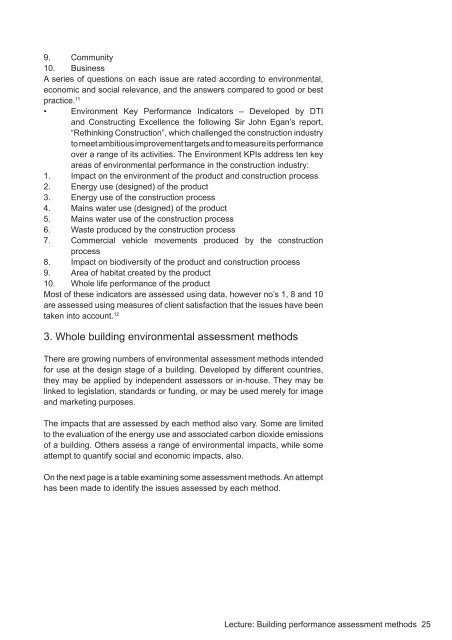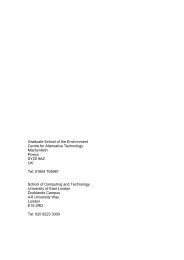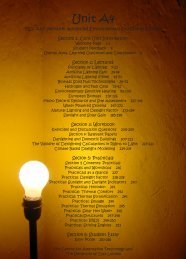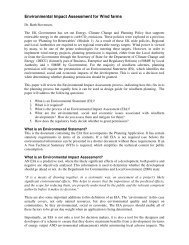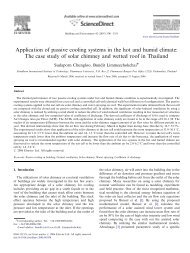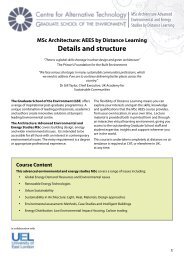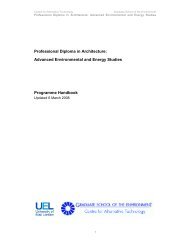Module B1 Study Book - the Graduate School of the Environment
Module B1 Study Book - the Graduate School of the Environment
Module B1 Study Book - the Graduate School of the Environment
Create successful ePaper yourself
Turn your PDF publications into a flip-book with our unique Google optimized e-Paper software.
9. Community<br />
10. Business<br />
A series <strong>of</strong> questions on each issue are rated according to environmental,<br />
economic and social relevance, and <strong>the</strong> answers compared to good or best<br />
practice. 11<br />
• <strong>Environment</strong> Key Performance Indicators – Developed by DTI<br />
and Constructing Excellence <strong>the</strong> following Sir John Egan’s report,<br />
“Rethinking Construction”, which challenged <strong>the</strong> construction industry<br />
to meet ambitious improvement targets and to measure its performance<br />
over a range <strong>of</strong> its activities. The <strong>Environment</strong> KPIs address ten key<br />
areas <strong>of</strong> environmental performance in <strong>the</strong> construction industry:<br />
1. Impact on <strong>the</strong> environment <strong>of</strong> <strong>the</strong> product and construction process<br />
2. Energy use (designed) <strong>of</strong> <strong>the</strong> product<br />
3. Energy use <strong>of</strong> <strong>the</strong> construction process<br />
4. Mains water use (designed) <strong>of</strong> <strong>the</strong> product<br />
5. Mains water use <strong>of</strong> <strong>the</strong> construction process<br />
6. Waste produced by <strong>the</strong> construction process<br />
7. Commercial vehicle movements produced by <strong>the</strong> construction<br />
process<br />
8. Impact on biodiversity <strong>of</strong> <strong>the</strong> product and construction process<br />
9. Area <strong>of</strong> habitat created by <strong>the</strong> product<br />
10. Whole life performance <strong>of</strong> <strong>the</strong> product<br />
Most <strong>of</strong> <strong>the</strong>se indicators are assessed using data, however no’s 1, 8 and 10<br />
are assessed using measures <strong>of</strong> client satisfaction that <strong>the</strong> issues have been<br />
taken into account. 12<br />
3. Whole building environmental assessment methods<br />
There are growing numbers <strong>of</strong> environmental assessment methods intended<br />
for use at <strong>the</strong> design stage <strong>of</strong> a building. Developed by different countries,<br />
<strong>the</strong>y may be applied by independent assessors or in-house. They may be<br />
linked to legislation, standards or funding, or may be used merely for image<br />
and marketing purposes.<br />
The impacts that are assessed by each method also vary. Some are limited<br />
to <strong>the</strong> evaluation <strong>of</strong> <strong>the</strong> energy use and associated carbon dioxide emissions<br />
<strong>of</strong> a building. O<strong>the</strong>rs assess a range <strong>of</strong> environmental impacts, while some<br />
attempt to quantify social and economic impacts, also.<br />
On <strong>the</strong> next page is a table examining some assessment methods. An attempt<br />
has been made to identify <strong>the</strong> issues assessed by each method.<br />
Lecture: Building performance assessment methods 25


